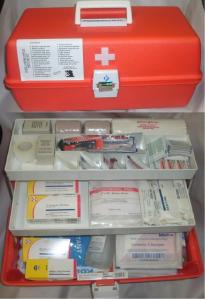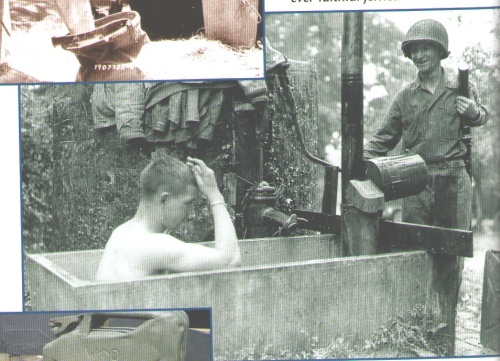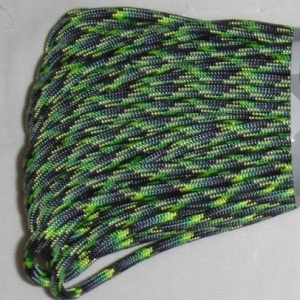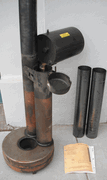Sorry for the delay in posts folks, I had planned to post more from Korea but stayed pretty busy. But I am back now, and we will pick back up.
In light of recent events on Japan and elsewhere, I think we should all take a moment to step back and reflect on how well prepared we are, as individuals and communities, for disasters large and small, so for the next few entries here we will look at what everyone should do to make sure they are prepared.
First thing to look at is a good first aid kit. If right now you, or your child if you are a parent, cut your hand badly, ask yourself do you have what it would take to properly bandage it up? If you were at work, would you? If you were in your car, would you?
If the answer is no, time to fix that. If your answer is ‘no, but I will just call the ambulance, that is what they are for” consider that many times just in bad snowstorms the EMS systems here are overwhelmed with calls for service. A large earthquake or a tornado or real blizzard would leave them overwhelmed- do you want to be “that guy” who ties up 2 paramedics and an ambulance for an injury you should have been able to bandage at home, keeping it from responding to people with more serious needs? I don’t.
If you own a business or supervise people at work, have you provided a basic first aid kit for your employees?
We sell a full line of first aid kits, ranging from a basic home and office first aid kit for $19.75 up to a professional EMT-B level jump bag for $$189.50. One piece of advice is buy the bag that is suited to your level of training and experience- not everyone needs the biggest, baddest kit unless you plan to take classes and learn to use it all. I usually suggest a kit like this one as a good kit for those with average training, not everyone needs the real expensive ones.
My opinion is you need a kit at home, at work, and in the car. However, if you get one bigger, more complete kit my advice is to keep that kit in your car. When you are at home, so is your car. When you are at work, so is your car- so keeping you best kit there keeps it close to you more of the day. After all, you can’t plan accidents!
Of course, to go with the kit your need training. A basic CPR certification and the Red Cross basic first aid are what I suggest at a minimum. If you are a parent, these basic skills are a bare minimum of what you need to provide for your family. I strongly suggest going further and seeking a first responder or EMT-B course at you local community college if you have the time. At least one school here in NC even offers EMT-B mostly online, with the hands on portions done on weekends.
One more word of caution- We sell a lot of kits, some of them are in a military style camo or green bag, some are in a civilian blue or orange bag. Unless you are military or LE and have a need for the camo, I strongly suggest you get an orange or blue bag or box that is easily identifiable as a first aid kit. I had one customer who purchased a green bag and came back a week later to get an orange one- he had a coworker injured at work, and sent someone to his truck for his first aid kit “in the green bag”- she returned with his green range bag full of pistols! So keep your kit easily identifiable, in case someone else needs to grab it.
So take some time to think about it. Do you have the first aid supplies and training to care for yourself and your family if need be? What about if resources are tied up and only the worst ones are getting medical attention because of a more widespread emergency?





